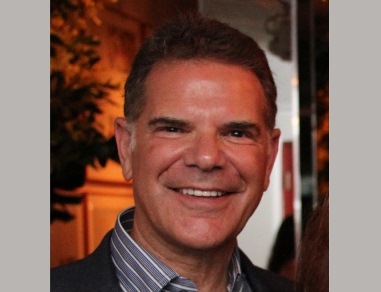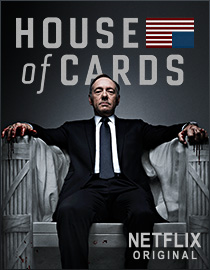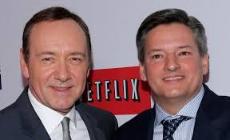Is Netflix' House of Cards and Binge Viewing the Future of TV?

Originally published March 2013
The Netflix release of House of Cards last month did two newsworthy things. It moved original programming by a streaming video provider into the big time with its $100 million two-season budget and brand-name star. This was a big move and raised its share of eyebrows, but Netflix' other move was more innovative and potentially more influential — releasing all 12 episodes of Season One at once. This decision reflected changes in how people consume television, and may well alter the way providers offer content. Netflix is betting $100 million that the simultaneous release of all 12 episodes of seasons one followed by season two will build loyalty and subscribers by delivering television in a "binge viewing" model. Netflix proudly announced that on opening weekend, one in ten Netflix viewers was tuning in to House of Cards. So will the full-episode release strategy, while popular with viewers, become a new reality for the TV business?
subscribers by delivering television in a "binge viewing" model. Netflix proudly announced that on opening weekend, one in ten Netflix viewers was tuning in to House of Cards. So will the full-episode release strategy, while popular with viewers, become a new reality for the TV business?
Though critics have applauded the artistic benefits of the simultaneous release, industry commentators have largely panned the decision. Yahoo! Financewriter Christopher Mims pointed out that Google Trends data shows a spike in web searches for a given show at the season premiere, then significantly larger queries as the season builds toward an end-of-season finale. Without time between those two points for a show to accumulate audience and momentum, he suggests it will be difficult to create that crescendo. Others from New York Timesop-ed pieces to independent media bloggers speculate about how Netflix will overcome all the advantages associated with the traditional approach.
Netflix' gamble is being replicated by several competitors (see below for details) and is opening a Pandora's Box of consequences for the business of pay and commercial network television, syndication television, video-on-demand viewing, DVDs, and the Hollywood studio machine. If viewers become addicted to the binge viewing model, original weekly episode ratings could suffer as viewers wait for critical and popular reviews before committing to a new series. Without clear early ratings measurement, networks will be challenged to determine the commercial viability of continued production commitments. ABC, CBS, NBC, Fox and especially the CW are already confronted with several days of delays as loyal viewers catch up on viewing their pre-recorded programs, with advertisers willing to pay only for an additional three days of viewing after the original. If viewers begin waiting for full seasons to become available before making a commitment, it further disrupts an ecosystem that is already on the precipice.
While networks need the benefit of ratings data to evaluate success,
Netflix doesn't do ratings, says Chief Content Officer Ted Sarandos. "I honestly have no motivation to do it. I don't sell ads, so ratings don't matter in that way." While it's conceivable that a network such as AMC or FX could develop a high profile series event and release it over a very short window with several sponsors, the model has been tried and it's highly unlikely it could emerge on any regular basis. Networks need sustaining schedules, consistency and continuity.
Netflix is stepping away not just from the traditional method of delivery, but from all the advantages associated with releasing a series week-by-week. Loyalty to a show can't accrue over a season as a series builds "water cooler" buzz. The window for social media engagement is narrowed. There is no ability to adjust characters and story-lines based on viewer feedback. There are benefits: production costs are more manageable and theatrical release promotional strategies apply. But for advertiser supported networks, and even for HBO and Showtime, the economics of full-episode releases are not viable. Few advertisers would step up to support a concentrated sponsorship model without assurance of success, and new series successes are difficult to come by. Pay nets need the ongoing support of popular series to drive continuing subscriptions. Netflix is also dependent on monthly subscriptions, but the company's economics are driven more by retaining loyalty and expanding its subscriber base than by creating and sustaining popular original programming.
Despite the costs and questionable direct return, Netflix has gone "all-in" with the strategy. They tested the waters last year with their popular "post-play" feature that makes watching the next episode in a series easy and intuitive. They've announced plans to release other originals — Hemlock Grove and the hotly anticipated return of Arrested Development — as full-season-at-once releases. House of Cards producer Beau Willimon made his intent very clear, claiming his goal was "to shut down a portion of America for a whole day," which the release of season two may accomplish (at the very least it will shut down my household). As with most places where media and technology intersect, there are few clear answers in this developing situation...but Netflix' move is one that has many in the TV industry asking several compelling questions.
The Binge
Without artificial restrictions like release schedules, viewers are showing an increased propensity to view a series in rapid succession to take in the entire story over the course of a week or even a weekend. The behavior has been around since the first series released on VHS, but came into its own with streaming video. Today it's so common it gets mocked on shows like Portlandia.Series drama demigod Aaron Sorkin himself binge-watches, admitting he's lost entire weekends to favorite series.
Executives at Netflix and Hulu prefer to call it "marathon viewing," a tag that makes it sound healthier than spending 12 consecutive hours on the couch, but it's an influential factor in the shape of their business. Online-originated content such as Lisa Kudrow's Web Therapy, Paramount's Burning Love, and the upcoming Dropping the Soap (from the creators of Web Therapy) are episodic but could easily convert to a full-season release model if the economics worked.
The Gamble
Netflix' competitors who paid closest attention to the success of House of Cards were Amazon, DirecTV, DISH, cable VOD distributors and emerging competitors Intel, LG and Samsung, who have announced original programming initiatives. Amazon is slightly behind Netflix in original programming development, but is making a real play for leadership in the next two years. They've ordered pilots for more than ten series they could be offering to Amazon users before the end of next year. No comment yet from Amazon leadership as to which method — weekly, or all at once — they'll use, but my bet is full-episode release for at least a few of the series. DirecTV is likely to stay with traditional release schedules for its original content, but it seems inevitable that the House of Cards approach will gain traction as viewers clamor for instant gratification.
What does traditional TV think?
CBS, NBC, FOX and ABC have yet to make strong statements about Netflix' release schedule, but they've already benefited from imitating on-demand content. Neilson ratings have seen bumps for most dramas and some comedies when networks provide on-demand viewing for past episodes via Hulu, iTunes and on the networks' websites. Scriptwriting for series dramas like The Walking Deadalready reflect the fact that people binge-watch by leaning less heavily on inter-episode cliffhangers and eschewing plot recaps. The high ratings for the third season of The Walking Dead on AMC are directly attributed to full season availability of seasons one and two on multiple platforms. Producers are now clamoring for networks to quickly make their series available on Netflix, iTunes, Hulu and DVD release. The latter business is virtually drying up as viewers turn en masses to streaming alternatives.
What About TiVo and TV Syndication?
Traditional TV is also feeling the sting of a competitor that gives customers what they want how they want it. In a recent press conference, Fox Entertainment's Chairman Kevin Reilly joked that viewers were missing the network's fall series launches because they were all watching Breaking Bad marathons. When Sundance Channel announced acquiring the first four seasons of that show for their broadcast lineup, reception was lukewarm because of those seasons' availability on demand at Netflix.
TiVo and similar set-top services can let viewers watch series on demand, though they can only binge-watch if they're willing to let a season run its course first. In many ways, this new development has the potential to make the DVR the prop jet of video media to streaming's turbine jet — a great idea that lost its competitive value compared to a great new development, but that continues to serve its marketplace. Cable provider Dish network provides free DVRs to subscribers, and last year introduced The Hopper, an ad-skipping service on recorded shows that mimics an ad-free viewing environment. Comcast is in the forefront among cable operators in advancing sophisticated video-on-demand services. Cable companies will move quickly to offer multiple full-season episodes of major ongoing cable network series and popular off-network programming, incorporating dynamic ad insertion to generate incremental revenues (and potentially offset losses in subscriber revenues resulting from a la carte models and over-the-top losses). The losers here could be local TV stations and cable networks dependent on off-network series, who could potentially lose series such as Seinfeld, Cheers, Law & Order, and even stalwarts like I Love Lucy and The Honeymooners. VOD will open a window for the return of series that remain popular with viewers but are either out of syndication or never had the financial benefit of syndication – series such as Hogan's Heroes, the original Hawaii Five O, and The Man from Uncleplus short-lived network series that could gain small but profitable cult followings. VOD is a far more flexible distribution medium than TV station and cable syndication, enabling studios to push out vintage programming in short bursts to respond to popular trends. For example, a studio could respond to the popularity of Homeland by adding the original version to cable operators' VOD offerings. Of course, streaming video can compete with VOD, but VOD is a viable solution for cable networks that have contractual restrictions limiting their streaming options. At the very least, cable has a viable competition response to the threat of streaming online video.
The Boss Monster
It's no secret that HBO is Netflix' chief rival, a relationship Ted Sarandos describes as Netflix "becoming HBO before HBO can become us." The premium cable pioneer has already shown a willingness to borrow pages from the Netflix playbook by offering previously-aired content on demand via HBO Go, and by testing a streaming service in Scandinavian markets last year. As of this week, though, they've made no public comment about how they'll respond to the delivery of House of Cards. It's likely that they're waiting, as are their competitors, for the other shoe to drop.
And the Talent?
In the past few years, self-publishing has moved from the domain of those without the talent or relationships to get traditionally published to a legitimate outlet used by even the most successful writers. So it is with direct-to-streaming television. House of Cards drew award-winning directors including James Foley and Joel Schumacher. Actors coming to Netflix and Amazon include big names like Jeffrey Tambor and 30 Rock's Cheyenne Johnson. Stars are showing up across the web on YouTube, Funny or Die and multiple sites. Sources say Netflix, Amazon, DirecTV and the emerging production units at Intel, LG and Samsung are preferred by talent because they are given more creative control and are less driven by commercial restrictions. For the Hollywood community, the new distributors and distribution models are a welcome addition to a competitive marketplace, further driving up already inflated production costs.
Share your opinion on House of Cards and binge viewing via e-mail to jm@jackmyers.com
Jason Brick contributed to this article. Jason has contributed over 2,000 blog and magazine articles to publications local, regional and national. He speaks regularly at writing and business conferences. You can find out more about Jason at his website.


